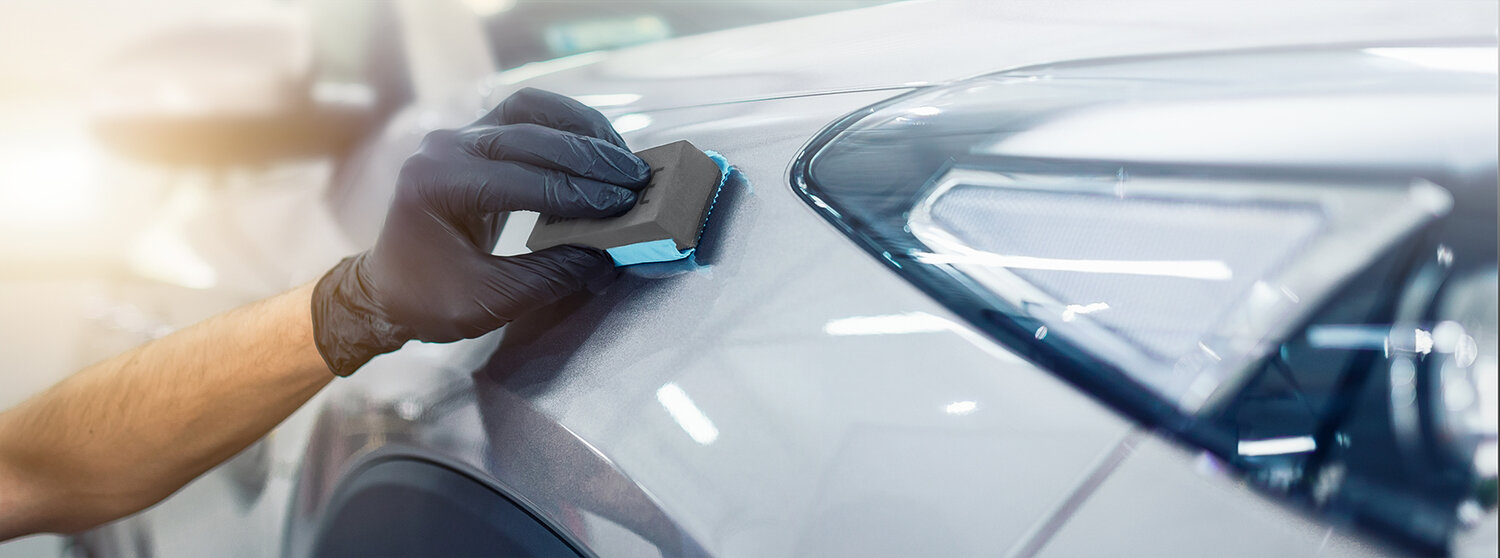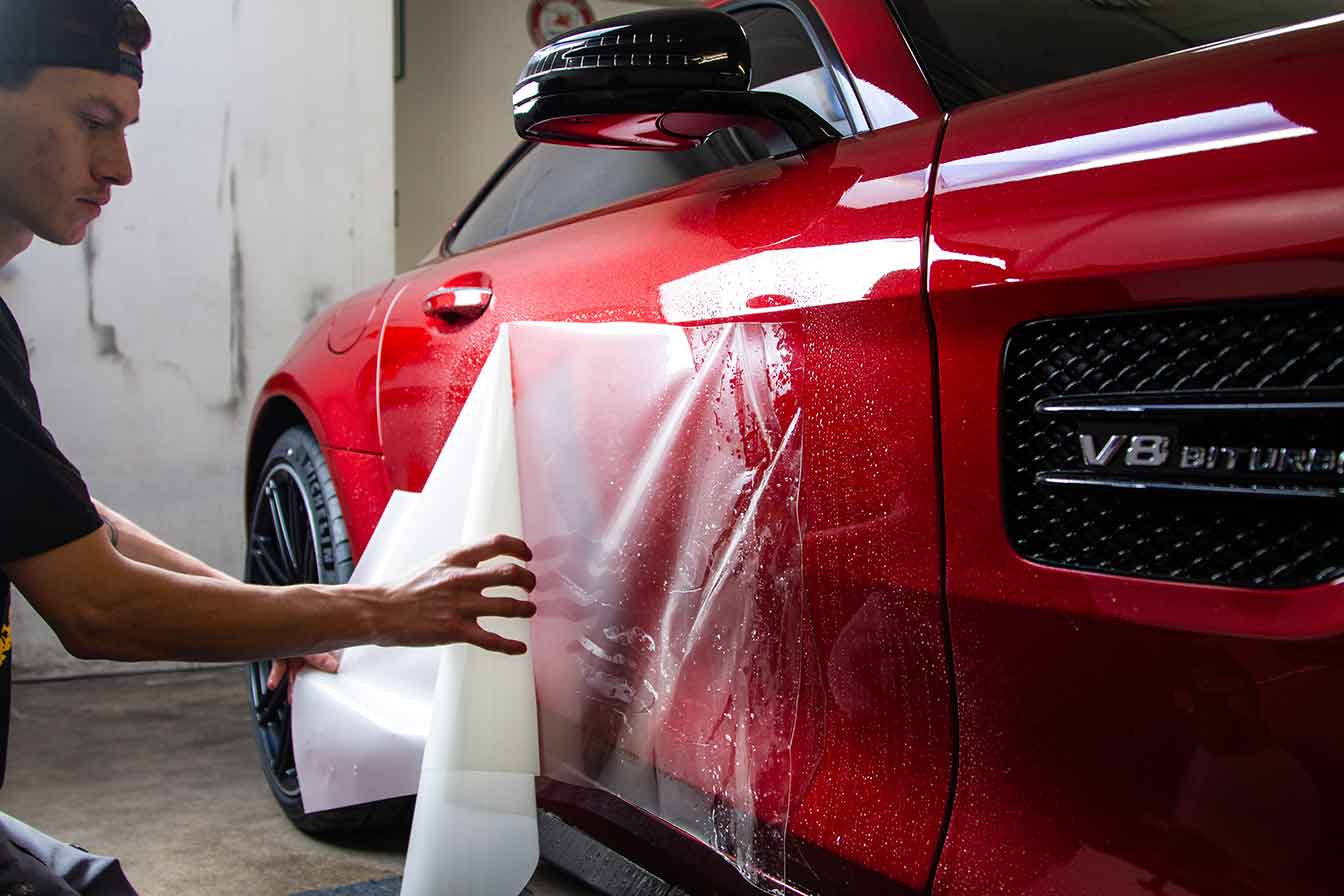Exploring the Long-Lasting Defense of Ceramic Coating for Your Car
Exploring the Long-Lasting Defense of Ceramic Coating for Your Car
Blog Article
The Importance of Ceramic Coating: Securing Your Vehicle's Outside With Precision
In an age where preserving the useful and aesthetic honesty of your lorry is extremely important, ceramic finishing emerges as a critical option. This protective layer not only defend against ecological misfortunes however additionally boosts the aesthetic allure of your vehicle. With its unique bonding properties, ceramic covering uses a degree of defense that much surpasses traditional waxing techniques. Yet, just how exactly does it attain such impressive outcomes? As we discover the subtleties of its application and contrast it to various other choices, one can not assist but wonder concerning the specifics that make this technology crucial for modern cars and truck care.
Advantages of Ceramic Coating
When it pertains to preserving a cars and truck's visual allure, ceramic covering uses considerable advantages. This advanced protective layer supplies a durable guard against environmental pollutants, including dirt, grime, and hazardous UV rays. By developing a semi-permanent bond with the lorry's paint, ceramic finishings effectively prevent oxidation and fading, ensuring that the auto preserves a glossy, showroom-like finish for an extensive period. This not only improves the lorry's aesthetic appeal yet also contributes to its long-lasting value.
In enhancement to its protective top qualities, ceramic coating provides amazing hydrophobic residential properties, causing water and various other liquids to bead off easily. This function streamlines the cleaning procedure, as dirt and particles are less most likely to adhere to the surface, minimizing the frequency and initiative required for maintenance. The finish's resistance to chemical spots from acidic impurities like bird droppings and tree sap is another notable benefit, lessening prospective paint damage.
Ceramic finishings likewise enhance scrape resistance, giving a layer that can absorb small abrasions and swirl marks. This attribute is particularly useful in maintaining a beautiful surface area, minimizing the possibility of visible blemishes and preserving the integrity of the auto's paintwork with time.

Just How Ceramic Finish Works
Understanding the auto mechanics behind ceramic coating exposes its efficacy as a protective solution for lorries. Ceramic finishings are basically fluid polymer applications that chemically bond with a vehicle's factory paint, developing a safety layer. This layer acts as a barrier against environmental impurities such as grime, ultraviolet, and dust rays, which can deteriorate an automobile's outside over time. The key part in ceramic finish is silicon dioxide (SiO2), which originates from quartz crystals and is recognized for its extraordinary solidity and durability.
Application of ceramic covering entails a meticulous procedure. Initially, the automobile's surface area must be extensively cleansed and sanitized to make certain optimum bond. Once used, the fluid polymer forms a semi-permanent bond with the paint, setting right into a clear, long lasting guard. This shield enhances the cars and truck's gloss and hydrophobic homes, assisting in easier cleansing by triggering water and pollutants to bead and slide off effortlessly.
In addition, the coating's molecular structure provides resistance to minor scratches and chemical spots. Unlike waxes or sealers that sit on top of the paint, ceramic finishings integrate with the surface, offering durable security. This combination is fundamental to its effectiveness, ensuring the car's finish continues to be immaculate for several years.
Contrasting Ceramic Coating to Alternatives
In the world of automobile security, ceramic layer stands as a powerful alternative when compared to traditional alternatives such see here now as waxes and sealants. While waxes supply a short-term glossy finish, usually lasting only a couple of weeks to months, ceramic layers supply a longer-lasting service, usually withstanding for years. This toughness is credited to the chemical bonding that takes place when ceramic finishes are used, creating a strong layer that is immune to ecological threats.
Contrastingly, sealants, although more resilient than waxes, still fall brief of the robust protection used by ceramic finishes. Sealants can generally last for approximately a year, providing an artificial guard against certain elements. However, they lack the superior hydrophobic buildings and UV defense that ceramic finishes deliver.
Moreover, ceramic coatings provide improved scrape resistance, which neither waxes neither sealants can successfully match. In summary, while typical waxes and sealants use basic protection, ceramic coverings provide a detailed, lasting option that considerably maintains the automobile and improves's exterior coating.
Application Refine Described
Using ceramic layer to an automobile needs a careful process to guarantee ideal results and toughness. Once cleansed, the car is dried out and polished to get rid of any type of imperfections, as any type of existing swirls or scratches can come to be more noticable after the layer is applied.
Adhering to surface prep work, the application of the ceramic covering starts. Making use of an applicator pad, the ceramic layer is used in tiny sections to guarantee even protection.
After application, the coating calls for a specific healing period, throughout which the lorry should be safeguarded from water and contaminants. This treating process can vary depending upon the product yet typically varies from 24 to 2 days. Eventually, this in-depth procedure is crucial in attaining a resistant and shiny surface.
Upkeep Tips for Durability
To keep the durability of a ceramic layer, adherence to a self-displined upkeep routine is essential. Prevent automated car washes, as their severe brushes can jeopardize the coating's stability.
Post-wash, drying out the lorry with a tidy microfiber towel prevents water spots that may weaken the layer with time. Furthermore, apply a ceramic layer booster every couple of months. These boosters strengthen the hydrophobic properties and boost the coating's safety capabilities, guaranteeing it continues to be reliable versus impurities.
Remember that parking locations play a critical duty in maintenance. ceramic continue reading this coating. Whenever possible, park in shaded locations to lessen UV exposure, which can slowly deteriorate the finish. For lasting storage, think about making use of a car cover for added security versus environmental components
Conclusion
To conclude, ceramic coating serves as a vital protective layer for automobile outsides, supplying durable defense against ecological elements such as uv, grime, and dust rays. By creating a semi-permanent bond with the paint, it enhances visual appeal while protecting the automobile's worth. Its hydrophobic homes help with simpler upkeep, differentiating it from alternative protective approaches. Understanding the application process and sticking to upkeep recommendations are essential for optimizing the longevity and efficiency of ceramic finish.
When it comes to maintaining a car's visual charm, ceramic covering offers substantial advantages. By creating a semi-permanent bond with the vehicle's paint, ceramic layers effectively stop oxidation and fading, making sure that the Read More Here car keeps a glossy, showroom-like finish for a prolonged period. Ceramic coatings are essentially liquid polymer applications that chemically bond with a cars and truck's manufacturing facility paint, creating a safety layer. In summary, while conventional waxes and sealers provide fundamental defense, ceramic finishes offer a comprehensive, long-term solution that significantly preserves the car and boosts's exterior surface.

Report this page